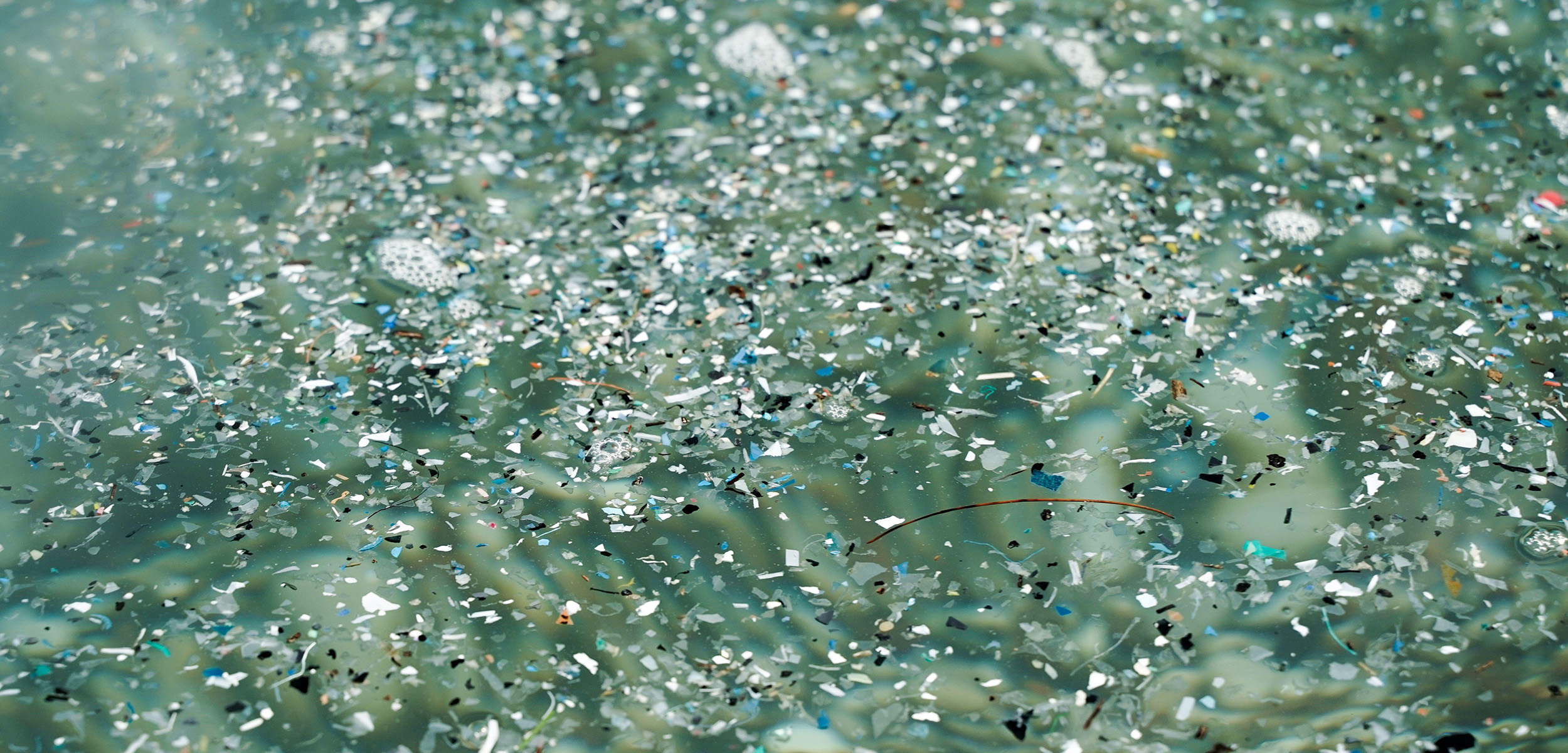Sponging Up Plastic Pollution
Scientists have developed synthetic sponges capable of extracting microplastics and nanoplastics from contaminated water.
Article body copy
Sponges. Is there anything they can’t do? For millennia, humans have used dried natural sponges to clean up, to paint, and as vessels to consume fluids like water or honey; we’ve even used them as contraceptive devices. Whether synthetic or natural, sponges are great at ensnaring tiny particles in their many pores. And as scientists around the world are beginning to show, sponges’ cavity-filled forms mean they could provide a solution to one of our era’s biggest scourges: microplastic pollution.
In August, researchers in China published a study describing their development of a synthetic sponge that makes short work of microscopic plastic debris. In tests, the researchers show that when a specially prepared plastic-filled solution is pushed through one of their sponges, the sponge can remove both microplastics and even smaller nanoplastics from the liquid. These particles typically become trapped in the sponge’s many pores. Though the sponges’ effectiveness varied in experiments, in part depending on the concentration of plastic and the acidity and saltiness of the liquid, optimal conditions allowed the researchers to remove as much as 90 percent of the microplastics. They tried it in everything from tap water and seawater to—why not—soup from a local takeaway.
The plastic-gobbling sponges are made mostly from starch and gelatin. Looking a bit like large white marshmallows, the biodegradable sponges are so light that balancing one atop a flower leaves the plant’s petals upright and unyielding, which the researchers suggest ought to make them cheap and easy to transport. Inside, the sponges’ structure appears less like lots of tiny bubble-like cavities and more like a jagged surface.
According to Guoqing Wang, a materials chemist at Ocean University of China and coauthor on the paper, the sponge formula is adjustable. By tweaking the temperature when the two compounds are mixed, he says, the sponges can be made more or less porous. This affects the size of particles collected—highly porous sponges have lots of very small pores, which is good for catching very tiny particles.
The sponges, if ever produced at an industrial scale, Wang says, could be used in wastewater treatment plants to filter microplastics out of the water or in food production facilities to decontaminate water.
It would also be possible to use microplastic-trapping sponges like this in washing machines, suggests Christian Adlhart, a chemist at Zurich University of Applied Sciences in Switzerland who has also experimented with creating sponge filters for collecting microplastics. Some microplastics enter waterways after being shed by synthetic fabrics when they are swirled around in the wash. “You could place such a sponge inside the drum,” says Adlhart. “I think it would absorb a large fraction of the fibers.”
Sponges like this work thanks to a duo of mechanisms, he adds. If water is actively driven through one, for example as it is squeezed and released, microplastic particles get trapped inside the sponge’s pores like collecting marbles in buckets. But even when the sponge is simply floating in still water, electrostatic interactions mean that some plastic particles will cling to it.
There are hiccups to the sponge’s potential adoption, though. One, says Adlhart, is that starch and gelatin are important to the food industry, meaning that there could be competition for the key ingredients in the future. However, similar sponges can be made with different materials. The version that Adlhart and his colleagues developed, for instance, uses chitosan—a sugar derived from the shells of crustaceans—to provide the sponge’s structure. Chitosan isn’t widely used commercially, says Adlhart, so it wouldn’t face the same competition.
Adlhart says his sponge design, which involves spinning together a matrix of chitosan nanofibers, was inspired by the filter-feeding activity of oysters, which trap particles in their gills as they pump seawater through them.
Chitosan, starch, and gelatin are all biodegradable. However, the process developed by Wang and his colleagues to make their sponge uses formaldehyde, a highly toxic compound, and there were traces of this in the sponges themselves. Wang says they’re working to come up with an alternative so that they can make a completely environmentally friendly sponge.
Anett Georgi, a chemist at the Helmholtz Centre for Environmental Research in Germany who wasn’t involved in the research, says that when it comes to cleaning up microplastic pollution in the ocean, the key is to stem the flow. We should start, she says, by targeting wastewater treatment plants that don’t yet employ technologies that already exist—such as filters made with sand or activated carbon—to remove plastic.
That’s something that could be realized quickly, says Georgi: “We don’t have to wait for crazy material.” But for smaller-scale applications, such as removing microplastics from household water supplies, the new sponge filters could be useful, Georgi suggests.
What’s still lacking, says Alice Horton at the United Kingdom’s National Oceanography Centre, is proof that any of these newer sponge-based technologies can be cost effective and successful in removing microplastics from water at a large scale. But one thing she is confident about is that efforts to remove microplastics after they have already reached the ocean are probably doomed to fail.
“I don’t think there is anything we can do on a large enough scale that will have any impact,” she says of that. “We have to stop it getting there in the first place.”

